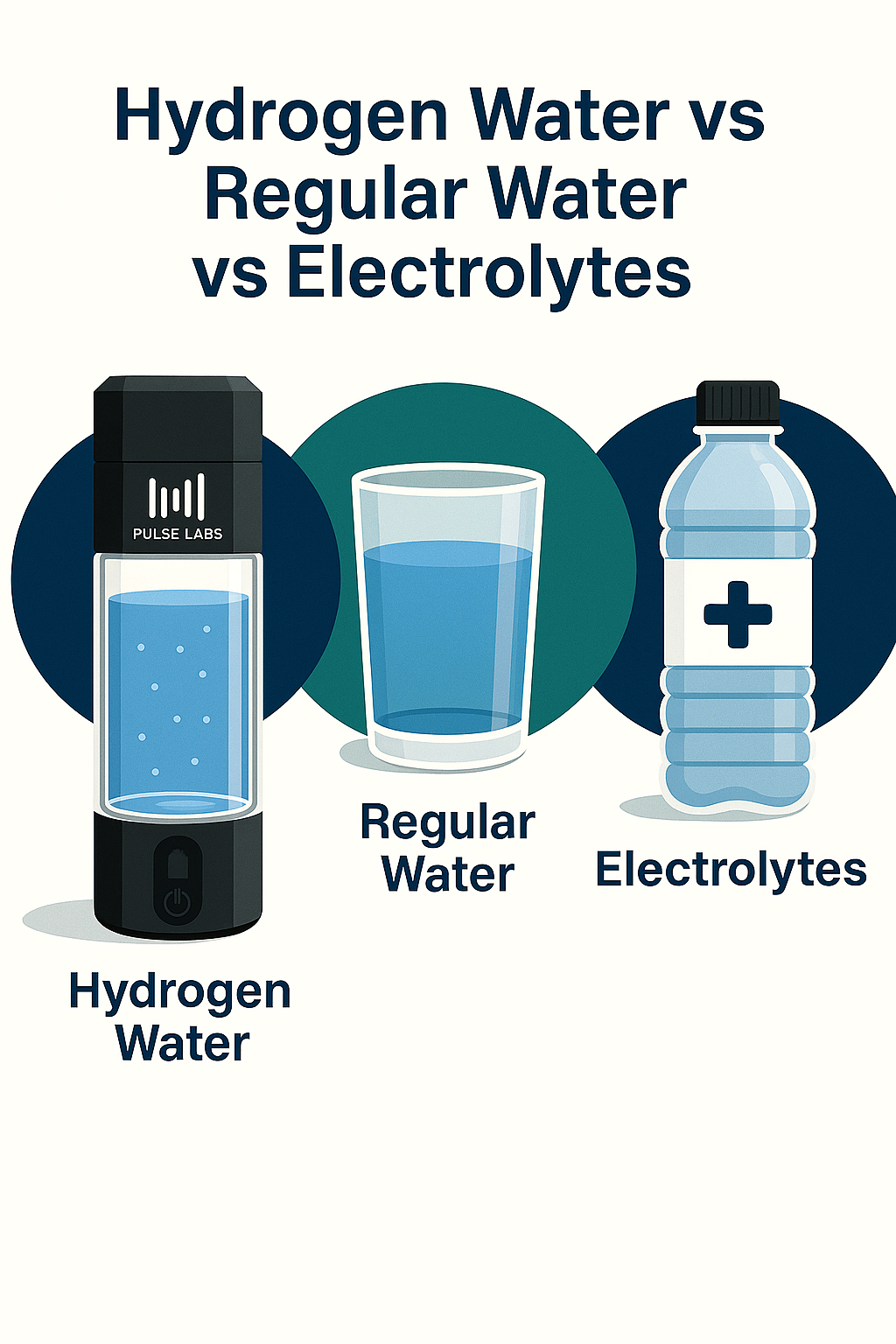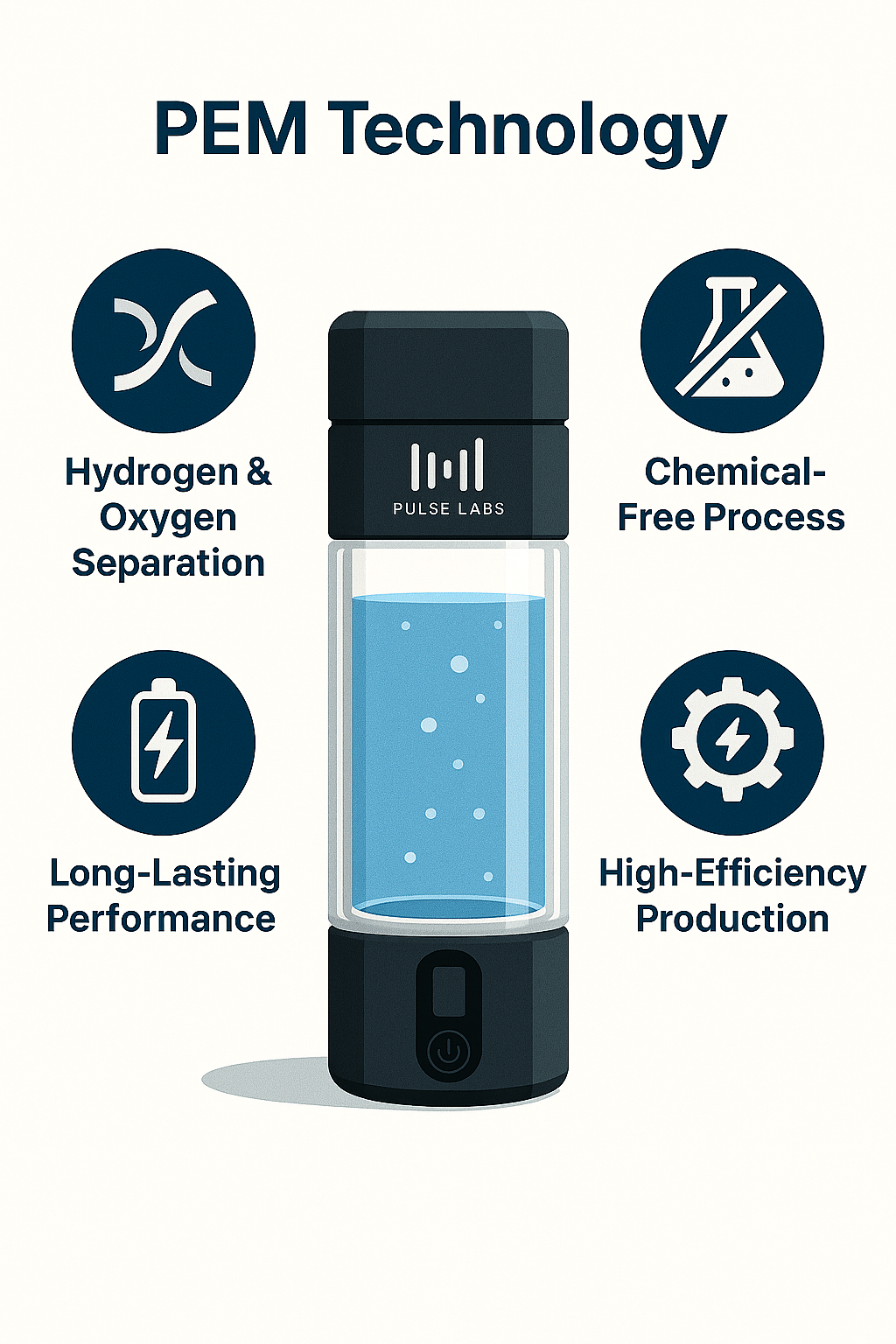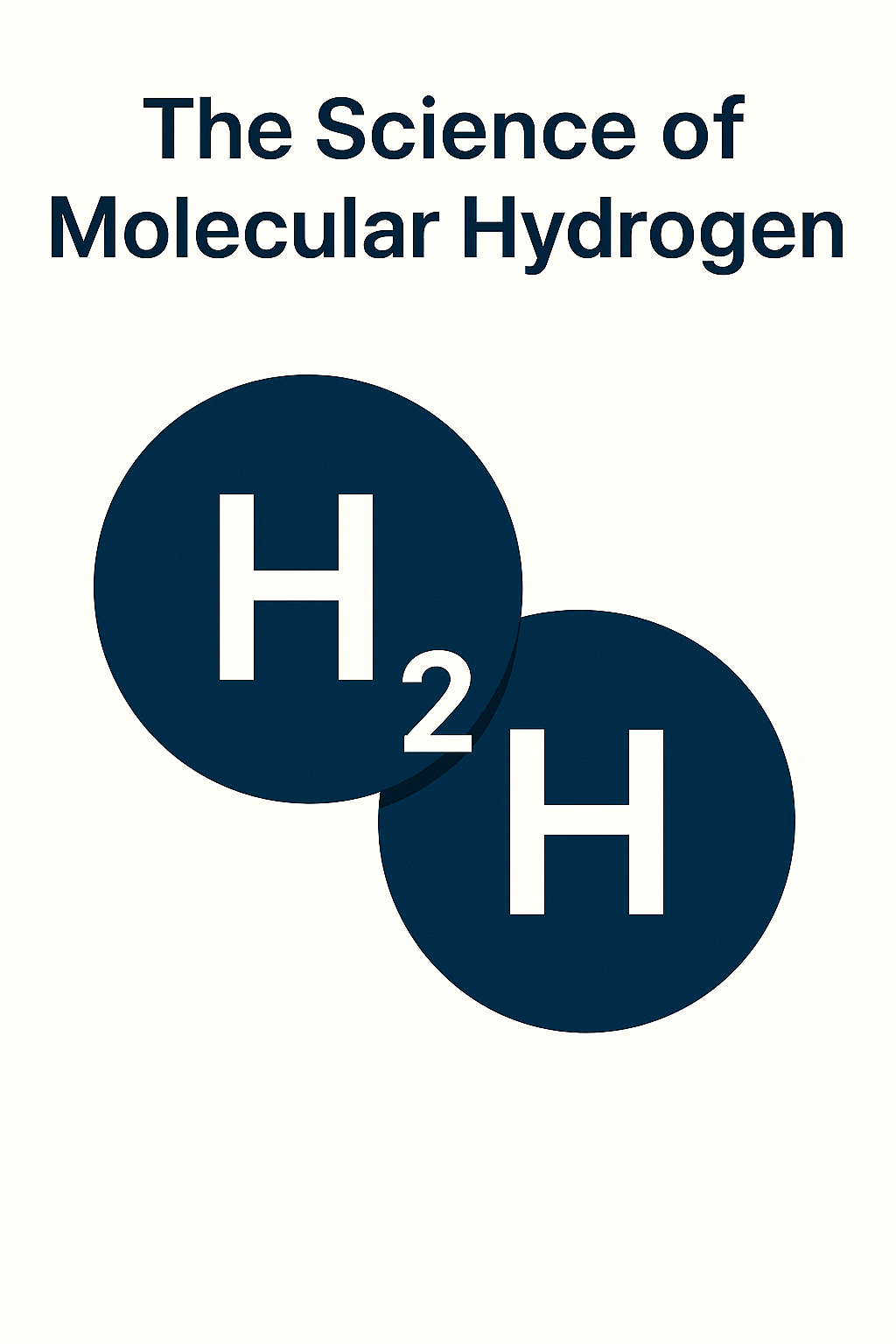
Hydrogen Water vs Regular Water vs Electrolytes | Pulse Labs
Hydrogen Water vs Regular Water vs Electrolytes: What to Drink, When, and Why
Hydration conversations often lump everything together—plain water, sports drinks, fancy bottles—but each option serves a different purpose. This practical guide compares hydrogen water, regular water, and electrolytes so you can build a smarter routine for daily wellness, performance, and recovery.
Quick take:
Regular water = baseline hydration.
Electrolytes = replace sodium/potassium/magnesium after sweat loss.
Hydrogen water = adds molecular hydrogen (H₂), which early research suggests may support oxidative stress balance, exercise recovery, and clarity.
What Is Hydrogen Water?
Hydrogen water is regular water infused with dissolved molecular hydrogen gas (H₂)—tasteless and odorless, measured in ppb (parts per billion). The cleanest way to generate it is PEM electrolysis (Proton Exchange Membrane), which separates gases so only pure H₂ enters your drinking water.
-
Pulse H1: everyday hydrogen water, up to 1000 ppb.
-
Pulse H+: performance-focused, up to 7000 ppb with 5- and 10-minute cycles.
-
Best used: drink shortly after generation for optimal H₂ levels.
Why people use it: Early studies and user reports suggest potential support for recovery, inflammation balance, and mental clarity. It’s not a cure or replacement for medical care—think of it as a smart hydration upgrade.
What Is Regular Water?
Plain water (tap, filtered, or bottled) is your baseline. It maintains fluid balance, supports temperature regulation, and keeps every system running. Most people should still aim for ~2–3 L/day (adjust for body size, climate, and activity).
Why it matters: Even mild dehydration can affect mood, focus, and performance—before you add anything else, nail the basics.
What Are Electrolytes?
Electrolytes (sodium, potassium, magnesium, chloride) help with fluid balance, nerve signaling, and muscle contraction. You lose them in sweat, so replacing them can be crucial after long or hot workouts.
Common formats: powders, tablets, ready-to-drink mixes.
Watch for: added sugars, artificial colors, and mega-doses. Choose a formula aligned with your sweat rate and duration.
Where Each Fits: The Simple Rule
-
Regular water: all day, every day.
-
Electrolytes: long/hot sessions, heavy sweaters, endurance days.
-
Hydrogen water: pre-/post-workout, mid-morning focus, recovery windows.
You don’t have to choose one forever—stack strategically based on the day.
Quick Comparison Table
| Option | What it adds | Best moments | Who benefits | Notes |
|---|---|---|---|---|
| Regular water | Fluid only | All day, with meals, desk work | Everyone | Start here; keep a bottle visible. |
| Electrolytes | Sodium, potassium, etc. | >60–90 min training, heat, heavy sweaters | Endurance & hot-climate training | Match dose to sweat; avoid unnecessary sugar. |
| Hydrogen water | Molecular hydrogen (H₂) | 30–60 min before training; immediately after; mid-morning focus | Athletes, professionals, wellness-focused | Use PEM bottles; drink soon after generation; ppb matters. |
Sample Hydration Playbooks
A) Office / Study Day
-
Morning: Hydrogen water (H₂) for a clear start (Pulse H1 or H+).
-
Throughout day: Regular water within reach.
-
Late afternoon: More regular water; skip excess caffeine.
B) Gym / Strength Day
-
Pre (30–45 min): Hydrogen water (H+ 5-min cycle).
-
During: Regular water or light electrolytes if you sweat a lot.
-
Post (0–60 min): Hydrogen water (H+ 10-min cycle) + protein.
C) Long Run / Heat
-
Pre (60 min): Electrolytes + Hydrogen water (H+ 5-min).
-
During: Electrolytes based on sweat rate; sip regularly.
-
Post: Hydrogen water for recovery + regular water rest of day.
Hydrogen Water: What the Science Suggests (Brief)
-
Oxidative stress: H₂ may act as a selective antioxidant, helping neutralize the most reactive species while sparing useful signaling molecules.
-
Recovery & performance: Some studies indicate improved fatigue markers, lactate handling, and perceived recovery.
-
Cognition: Users often report clarity without stimulants.
Caveat: Research is promising but still evolving. Results vary by protocol, dose, and individual.
Why PEM Matters (Purity & ppb)
Not all generators are equal. PEM (Proton Exchange Membrane) separates gases so only hydrogen reaches your water—supporting purity and higher ppb while minimizing unwanted by-products.
-
Pulse H1 (up to 1000 ppb): simple, everyday use.
-
Pulse H+ (up to 7000 ppb): higher output; 5- and 10-minute cycles for training days.
-
Materials: platinum-coated titanium electrodes; quality components; Australian brand standards.
Safety & Practical Tips
-
General safety: Molecular hydrogen is non-toxic; excess is exhaled.
-
Drink fresh: H₂ dissipates over hours; generate and sip soon.
-
Electrolyte dosing: Match to duration and sweat—avoid overdoing sodium if not needed.
-
Medical note: If pregnant, managing a condition, or on medication, speak with your clinician first.
FAQs (Quick Answers)
Is hydrogen water a replacement for regular water?
No—think of it as an upgrade for key moments (focus, training, recovery).
Should I always add electrolytes?
No. Use them when sweat loss is high, in long/hot sessions, or if you cramp easily.
Do I need 7000 ppb?
If you want higher H₂ exposure around training and recovery, Pulse H+ is ideal. For daily simplicity, Pulse H1 is great.
The Pulse Labs Take
For most people, the winning routine is simple:
-
Regular water all day.
-
Electrolytes when training is long/hot.
-
Hydrogen water (PEM-generated) before/after workouts and during focus blocks.
With Pulse H1 and Pulse H+, you can tailor ppb and cycle time to your goals—everyday wellness or performance-driven recovery—backed by premium materials and Australian design.
Hydration, engineered. Water, reimagined.


